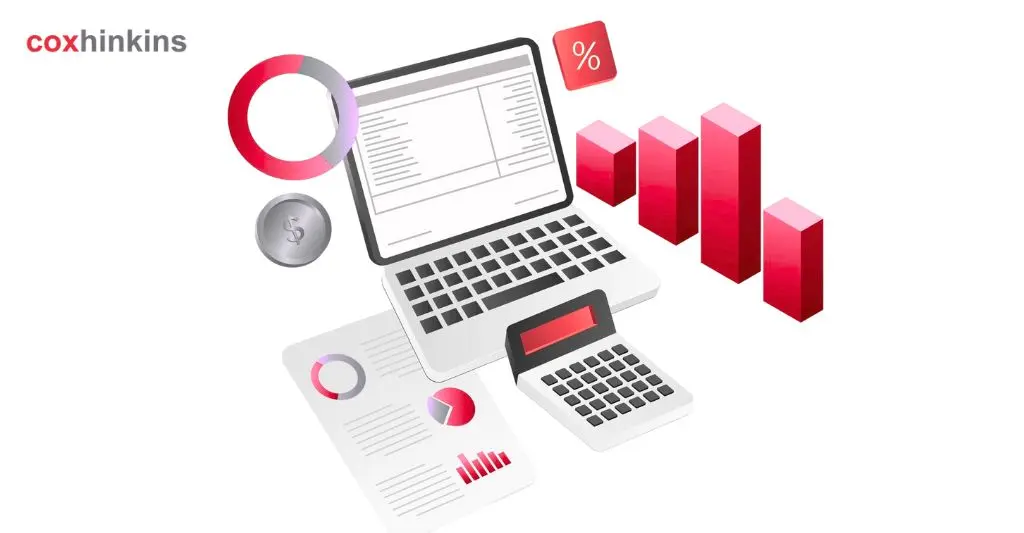- What Are Management Accounts?
- Why Are Management Accounts Important for UK Businesses?
- What Information is Included in Management Accounts?
- How to Prepare Management Accounts?
- Why Prepare Management Accounts?
- Management Accounts and UK Regulatory Requirements
- Tools and Software for Management Accounts in the UK
- How to Use Management Accounts for Strategic Business Decisions?
- Frequently Asked Questions
- Conclusion
Management accounts, sometimes called management accounting reports, display current financial data and other important business information. They provide an overview of the company’s present financial situation, and it is a useful tool for strategic decision-making and business performance.
Limited corporations must submit statutory year-end accounts to Corporation House and HM Revenue and Customs, but the law does not require management accounts.
Although both depend on income, cash flow, and balance sheet data, statutory and management accounts interpret the data differently.
Annual statements of your financial status that adhere to a predetermined format and are solely focused on the numbers to satisfy legal requirements are known as statutory accounts.
What Are Management Accounts?

The financial health of your business is thoroughly outlined in management accounts, which are usually produced on a monthly or quarterly basis. They contain important elements like:
- a sheet of balances.
- A cash flow statement.
- A summary of report
- An account for profit and loss.
Accurate management reports help you identify current business trends, deal with problems regularly, and monitor the development of your business performance.
They will give you better financial management than ever before and help in the growth of your business, even though they are not required by law and do not need to be submitted to HMRC.
You can Also Check Our Other Guide: Management Accounting vs Financial Accounting
Why Are Management Accounts Important for UK Businesses?
Management accounts are critical to the expansion and success of any firm. Regularly monitoring your earnings and expenses will provide you with important information about your financial situation and room for improvement.
Constant observation enables you to make well-informed choices and modify your tactics as needed.
Management accounts give you a complete picture of your company’s finances by taking into consideration more than simply your bank balance. They also consider future expenses, revenue streams, and market conditions.
Making smart decisions to increase your net profit is made possible by knowing your profitability margins and trends, while being able to recognise sales trends quickly helps you plan more effectively and take advantage of Key Performance Indicators (KPIs) opportunities.
The tools and information you need to prosper in the cutthroat corporate environment of today are essentially provided by management accounts.
What Information is Included in Management Accounts?
Depending on the industry, reporting requirements, and size of the company, management accounts might differ greatly. But the majority of excellent reports consist of:
- P&L Statement: Income, direct expenses, gross profit, overheads, and net profit are all clearly broken down in the P&L statement.
- Balance Sheet: The balance sheet is a picture of assets, liabilities, and equity.
- Cash Flow Statement: Inflows and outflows of cash during the reporting period.
- Executive summary: A high-level synopsis that highlights trends, obstacles, and accomplishments.
- KPIs: The Key Performance Indicators (KPIs) are important performance metrics, such as stock turnover and gross profit margin percentage.
How to Prepare Management Accounts?
The most beneficial management accounts are those that are presented in a way that is easy for coworkers across the organisation to understand and contain relevant information specific to the company.
Your detailed instructions for creating management accounts are as follows:
Gather data
Use accurate, current data from your accounting systems as a starting point for set of management accounts.
Make sure:
- All of the transactions are documented.
- Complete bank reconciliations and precise ledgers
This contains:
- invoices for purchases and sales
- bank records
- Payroll documentation
- Petty cash logs
- Finance and loan agreements
- VAT returns
Ensure accuracy
To monitor any changes, double-check everything, and use audit trails. Accurate data helps you prevent unpleasant surprises later on by providing a strong basis for trustworthy financial reports. This could involve monetary shortages or unforeseen tax payments.
You should:
- Compare your cashbook and bank statements.
- Check the balances for PAYE and VAT.
- Verify purchase and sales records with supplementary documentation.
Produce Financial Statements
It’s time to create the basic statements when your financial data has been cleaned and completed. A comprehensive financial picture of your company is given by these reports. They assist you in determining whether your business is expanding sustainably, accumulating cash reserves, or approaching financial strain.
These should consist of a:
- Income, direct expenses, overheads, and net profit or loss for the reporting period are all summarised in the P&L.
- The balance sheet displays the financial status of your business at a specific moment, including its assets and liabilities.
- The cash flow statement shows the liquidity condition by tracking the flow of money into and out of the company.
Incorporate Operational Metrics
The story is not entirely conveyed by financial figures alone. Incorporate Key Performance Indicators (KPIs) that provide insight into operational performance to put the financials in context.
These should consist of:
Inventory turnover, customer attrition rates, cost per acquisition, and sales growth.
Prepare an executive summary
This important step is frequently missed. Since senior management rarely has the opportunity to examine every figure, a concise executive summary highlights the most important points. This enables directors or decision makers to rapidly understand the issue and prioritise actions by transforming data into actionable insight.
Write a concise synopsis in simple English that addresses:
- important financial outcomes
- noteworthy patterns
- opportunities or hazards, and practical suggestions
Analysis and Interpretation
Accurate data analysis and interpretation can transform numbers into insights and improved business performance.
Trend analysis
Look at data over several months to identify trends in cash flow, profitability, expenses, and revenue.
Analysing variance
To find patterns, evaluate actual results versus forecasts, budgets, or prior periods.
Breakdowns by sector
It might also be beneficial to analyse the business sector if you work for a huge organisation.
Cost evaluation
Examine spending to find places where money might be saved or efficiency increased.
Share insights with key stakeholders
The usefulness of management accounting depends on stakeholders’ comprehension and action. They must all agree to accomplish this. Business intelligence is created through the analysis and interpretation of raw data, which aids in directing strategic decision-making.
You could:
- Call frequent meetings for financial reviews.
- Make use of dashboards and charts
- Provide suggestions in addition to the data.
Why Prepare Management Accounts?

Better Decision-Making: With the support of management accounts, which provide you with monthly or quarterly financial data, you can make well-informed decisions about investments, spending, hiring, and expansion.
Early Problem Detection: They assist in identifying problems before they become significant, such as declining profitability, increasing expenses, or cash flow challenges.
Track Performance: They assist you in measuring progress toward goals by displaying the performance of several aspects of your company.
Improve Cash Flow Management: Monitoring incoming and outgoing funds with regular reporting helps you prevent shortages or overextending credit.
Budget Control: They help you stay on track financially by allowing you to compare real results to your budget.
How Often Should UK Businesses Prepare Management Accounts?
Though most companies choose to compile management accounts on a monthly or quarterly basis, there is no hard and fast rule about the frequency of these reports. Consistent insight into the financial performance of management teams and business owners is ensured by regular reporting. This aids in their decision-making and enables them to react swiftly to any new problems.
Management Accounts and UK Regulatory Requirements
Even though they are not required by law in the UK, management accounts are crucial for fulfilling larger financial and regulatory requirements. How to do it:
Not Legally Required — But Highly Recommended: The preparation of management accounts is not legally required of businesses. Nonetheless, they are regarded as best practices for internal control and sound financial governance.
Help Prepare Statutory Accounts: It is legally obligatory for all UK corporations to submit annual statutory accounts. It is simpler to create accurate year-end financial statements when management accounts are used.
Support Timely Filing with HMRC and Companies House:
Having current numbers helps guarantee:
- submitting corporation tax returns (CT600) on time
- Timely submission of yearly financial statements to Companies House
Assist in Meeting Audit Requirements: Audits are required for larger businesses or those that surpass specific benchmarks. This process is made easier by regular management accounts, which offer constant financial records.
Useful During HMRC Reviews or Investigations: Clear, current management accounts can be helpful in your case and lower the risk if HMRC examines your tax issues.
Tools and Software for Management Accounts in the UK
To make reporting, budgeting, forecasting, and decision-making more efficient, management accountants in the UK employ a variety of tools and software. The most popular and suggested tools are divided into the following categories:
Software for accounting
- Sage 50/Intacct is a reliable option for SMEs and expanding businesses in the UK.
- Easy-to-use cloud-based products for small businesses are Xero and QuickBooks Online.
- Complete ERP solutions for bigger businesses are offered by NetSuite and Dynamics 365.
Forecasting and budgeting
- Float & Fathom is an excellent tool for tracking financial performance and cash flow.
- Highlight Reporting: For financial dashboards, Key Performance Indicators (KPIs), and budgeting.
- Adaptive insights: Sophisticated planning for intricate organisations.
Reporting & BI Tools
- Transform data into interactive dashboards and reports using Power BI and Tableau.
- Strong visual analytics and business insights are provided by Qlik Sense.
Spreadsheets & Integration
- Even with the addition of tools like Power Query, Excel and Google Sheets remain indispensable.
- G-Accon: Provides live reporting by connecting sheets to accounting platforms.
Expense & Compliance Tools
- Automate workflows for approval and data entry with Dext & ApprovalMax.
- Manage employee spending with Pleo/Soldo smart prepaid cards.
- CaseWare and IRIS: For reporting and compliance with UK standards.
How to Use Management Accounts for Strategic Business Decisions?
Monitor Financial Health: To monitor important variables like cash flow, costs, and profit margins, use management accounts that are either monthly or quarterly. This makes it easier to see patterns early and make wise choices before issues develop.
Set and Adjust Budgets: Compare budgets with actual financial performance. Variances may indicate areas that require strategic investment or cost-cutting, excessive spending, or poor performance.
Improve Cash Flow Management: Forecasting future financial demands is made easier by cash flow reports in management accounts. Planning investments, loan repayments, and managing supplier/customer terms all depend on this.
Guide Pricing and Cost Strategies: Divide the profit and expenses of the product or service by division, region, or market. This information can be used to inform price adjustments or identify areas in which efficiency gains are required.
Inform Stakeholders: Give directors, investors, or lenders concise reports supported by data. This encourages investment or strategic alliances and boosts confidence.
Track KPIs: Track metrics that measure success, such as revenue per employee, debtor days, and gross margin percentage. These aid in bringing daily activities into line with long-term objectives.
Frequently Asked Questions
Who needs to use management accounts?
Directors, management teams, and business owners of all sizes can gain from this, particularly those who want to expand or boost productivity.
Which important areas are supported by management accounts?
Planning for investments, pricing strategy, cost control, budgeting, cash flow forecasting, and stakeholder communication.
Why do strategic decisions require management accounts?
Before the year-end accounts are even generated, they offer real-time data to help with trend identification, risk management, cost control, and growth planning.
Do I need specialised software to get them ready?
Not usually. For improved automation and insight, you can utilise programs like Excel or cloud accounting software (such as Xero, QuickBooks, or Sage) with reporting add-ons.
Conclusion
Management accounts are more than just internal reports — they are essential tools for strategic planning, performance monitoring, and financial control. By delivering real-time insights into your business’s financial health, they help you stay agile, identify opportunities, and make informed decisions that drive long-term success.
If you’re ready to gain greater clarity and control over your business finances, consider partnering with a professional.
Get in touch with our team today to learn how our tailored management accounting services can support your growth and give you the confidence to lead with data.
Disclaimer: Kindly note this blog provides general information and should not be considered financial advice. We recommend consulting a qualified financial advisor for personalised guidance. We are not responsible for any actions taken based on this content.
